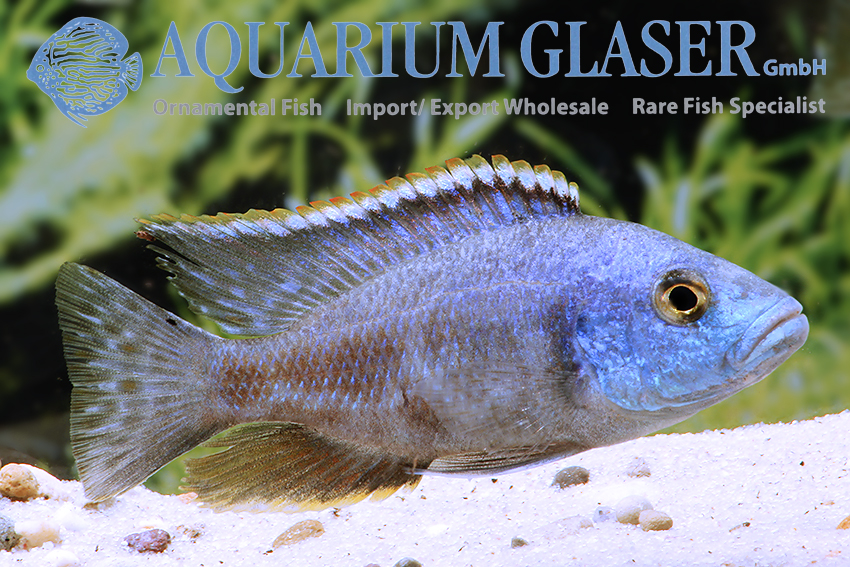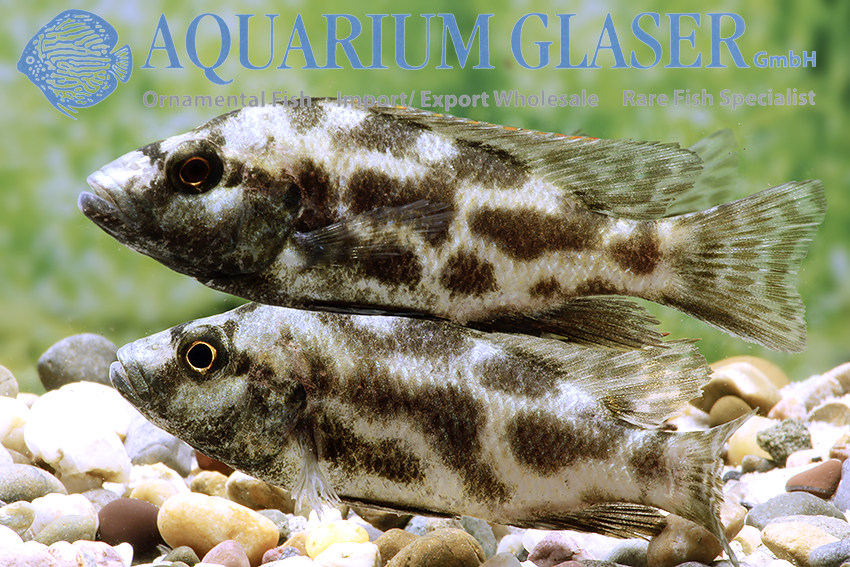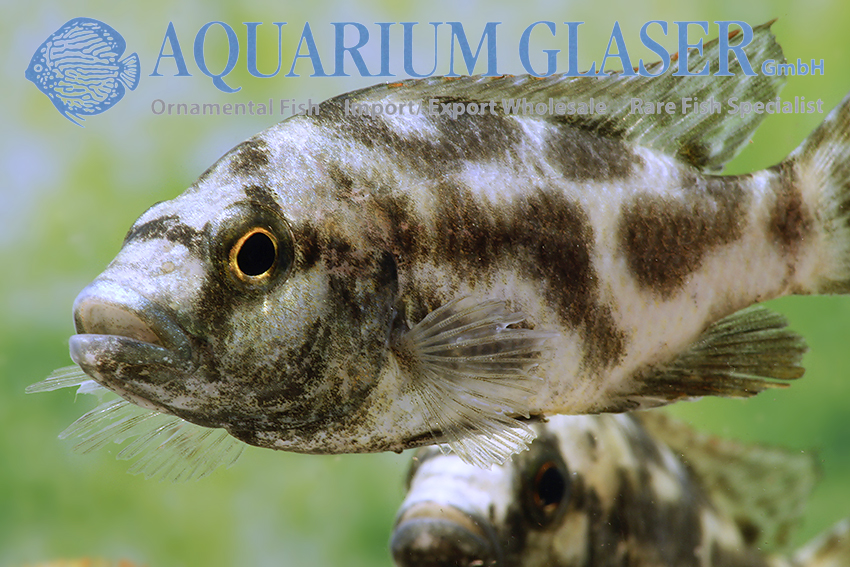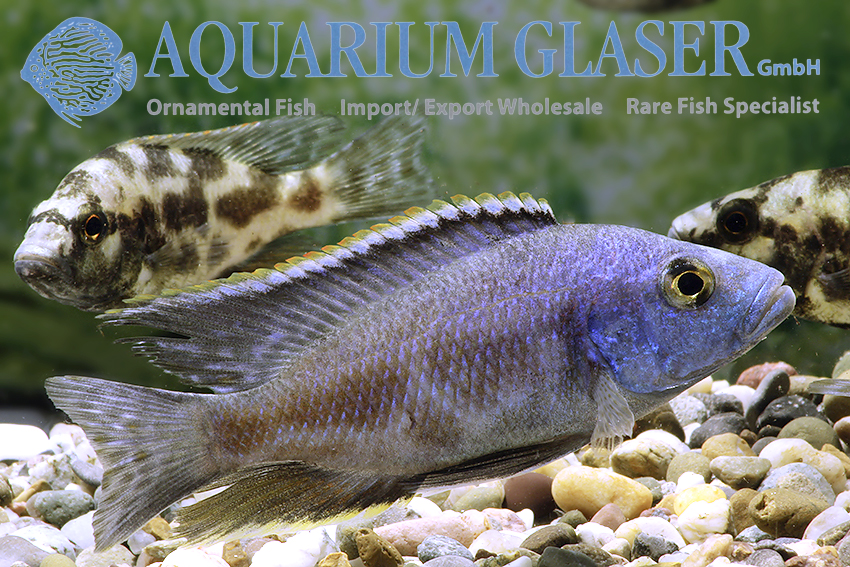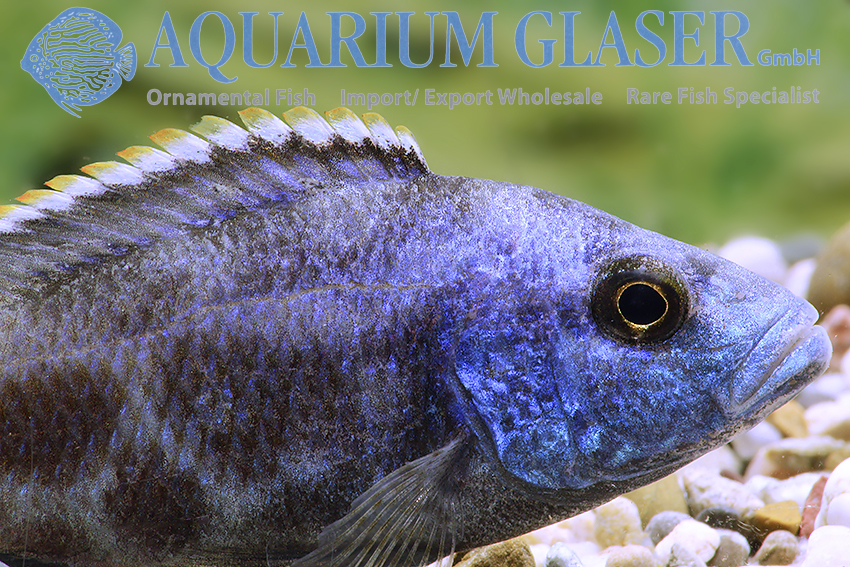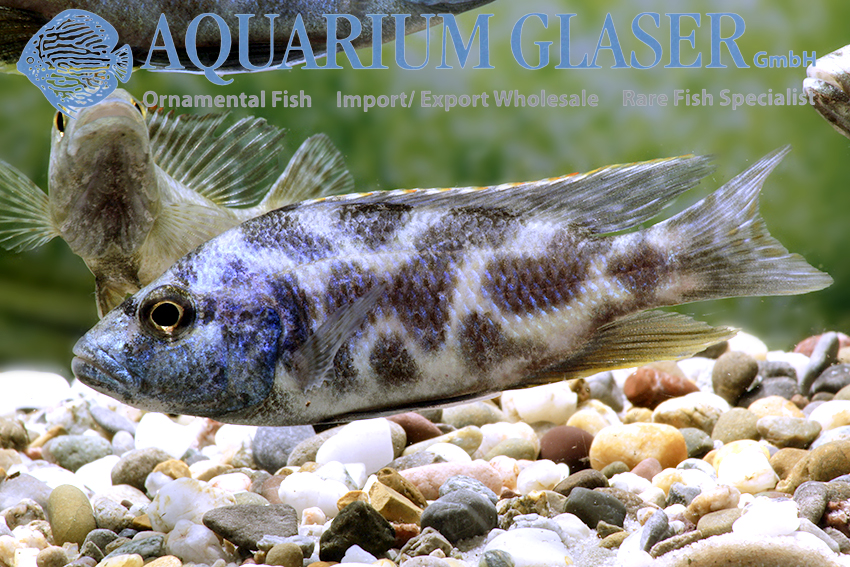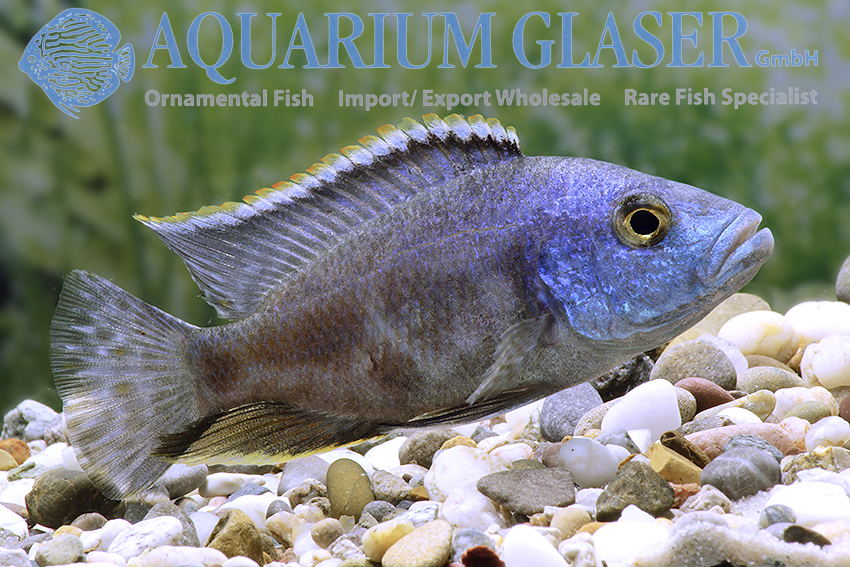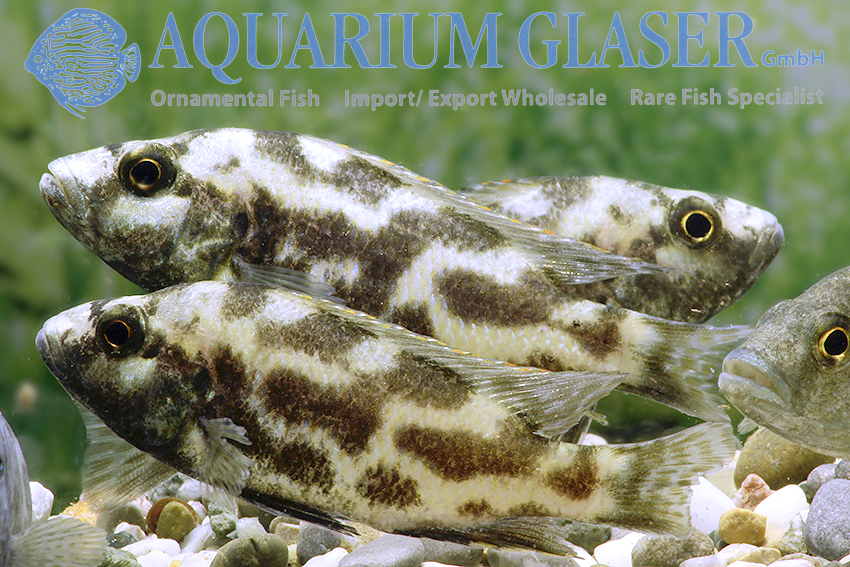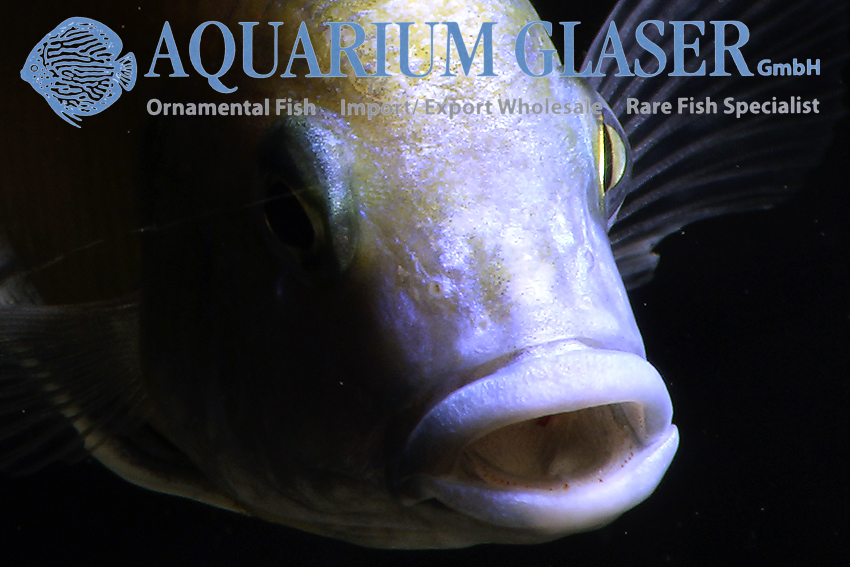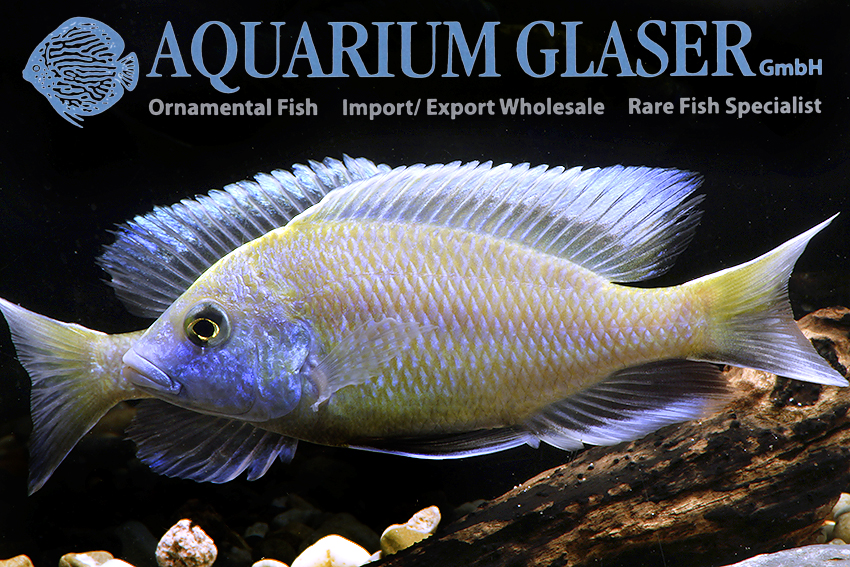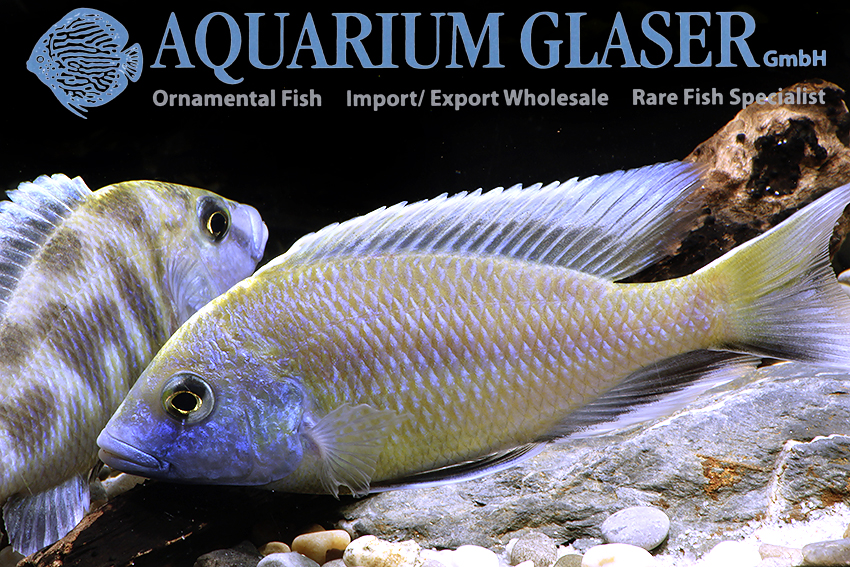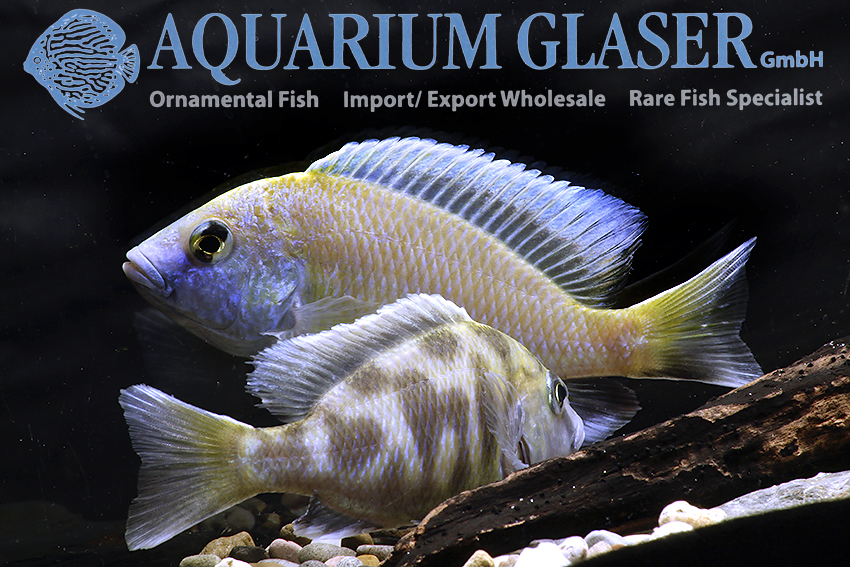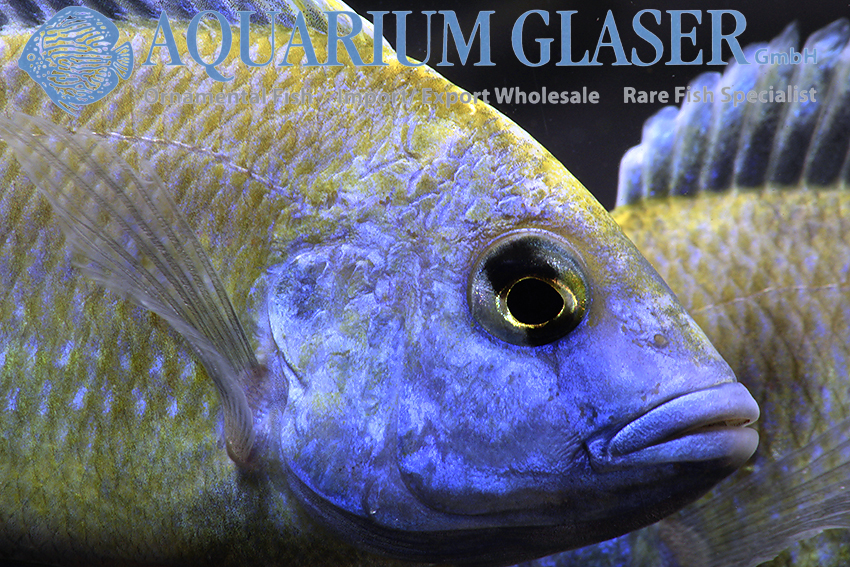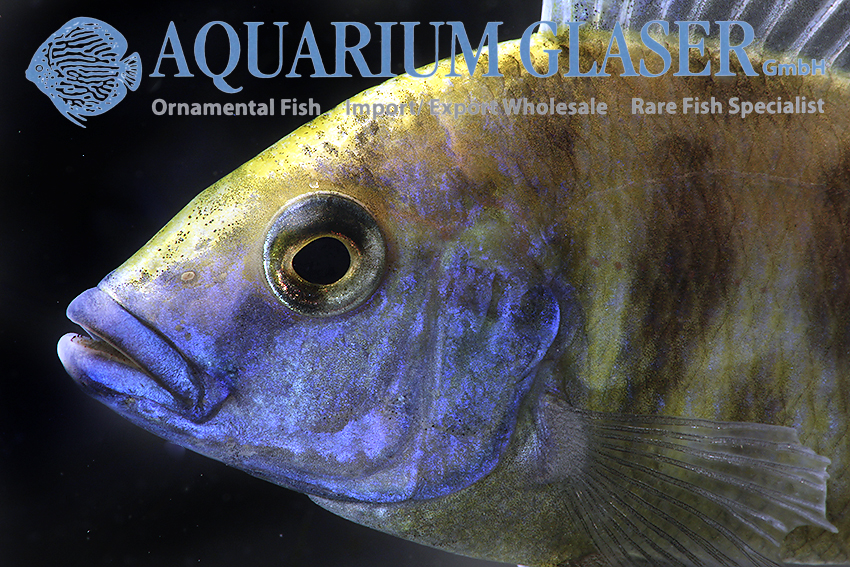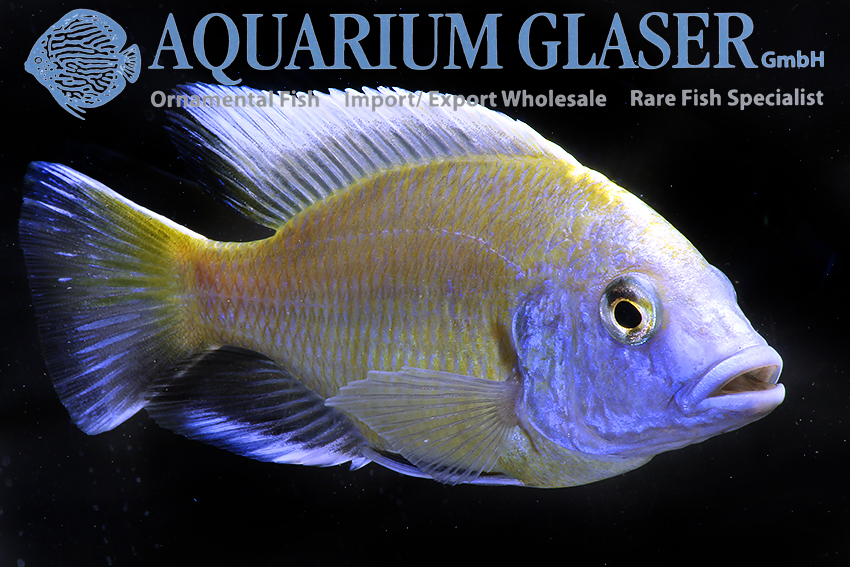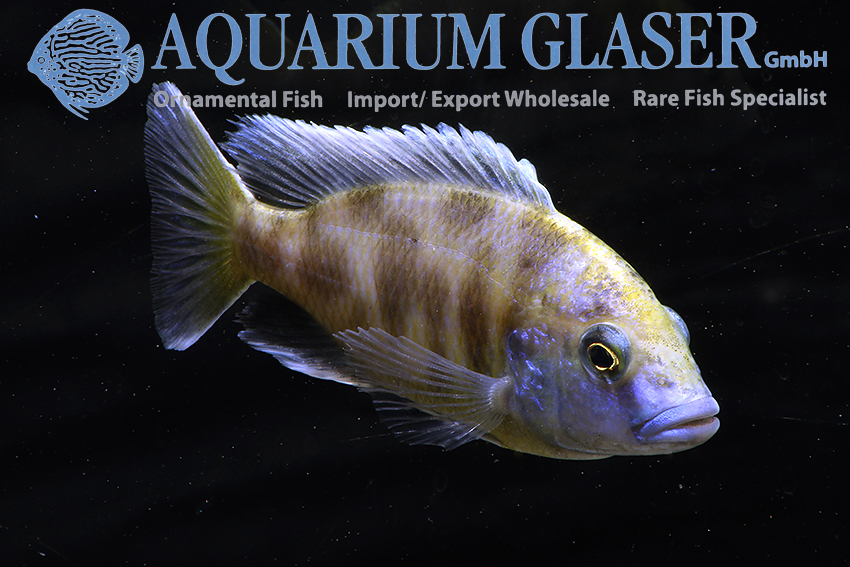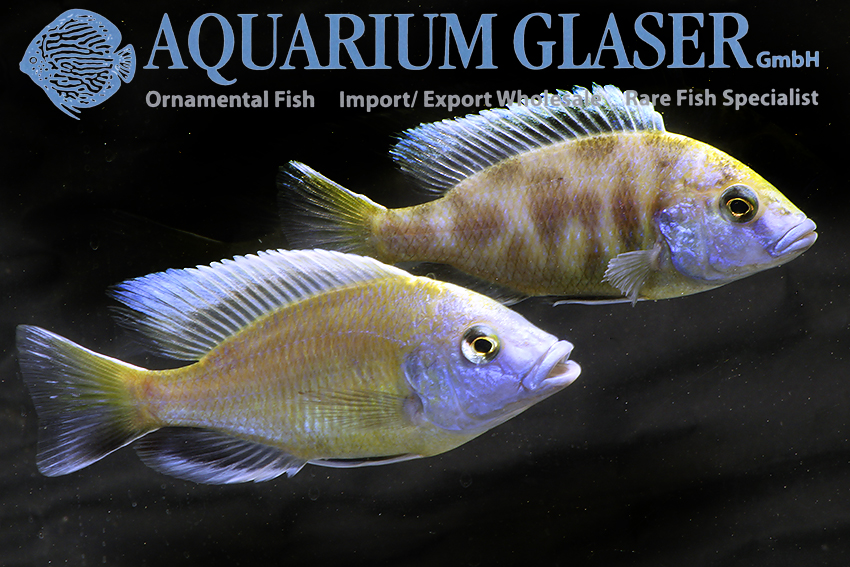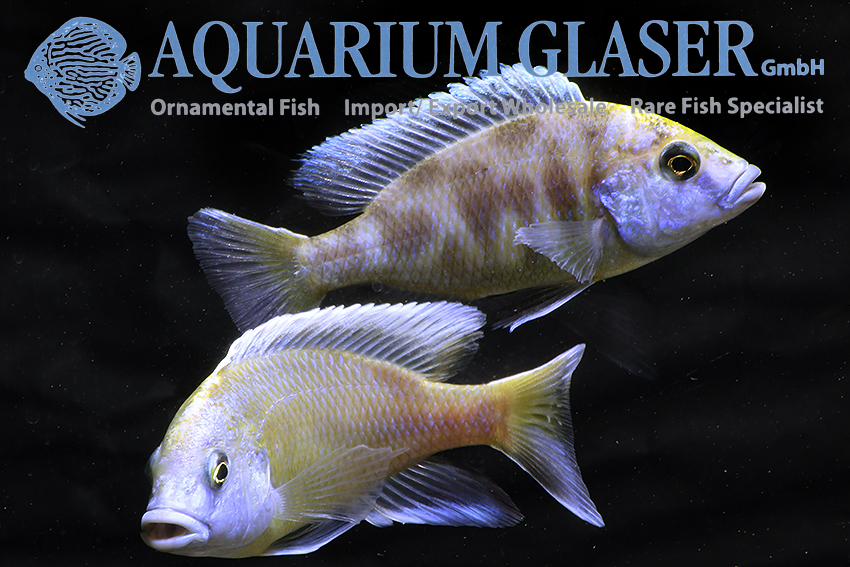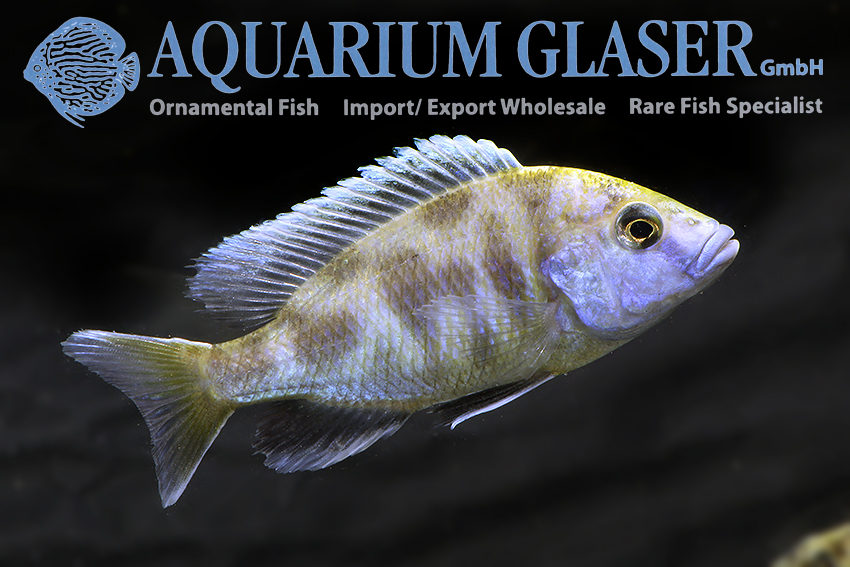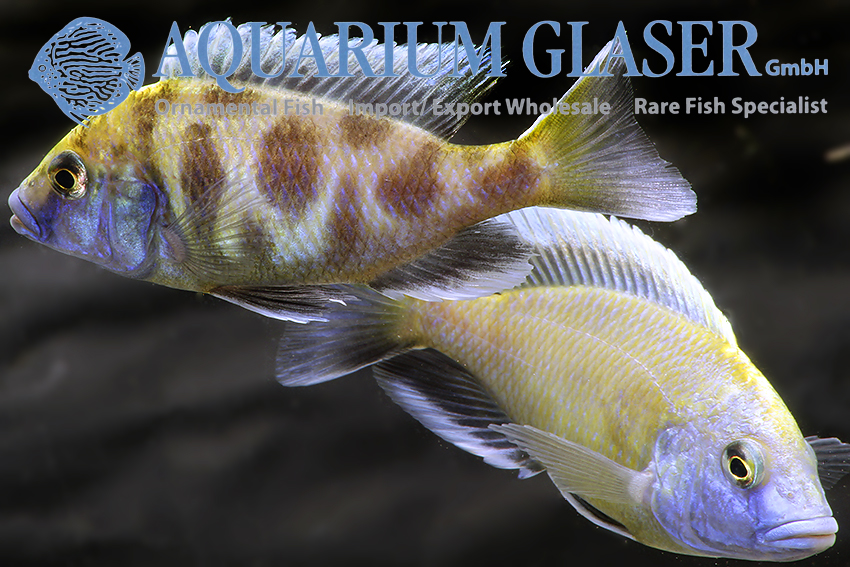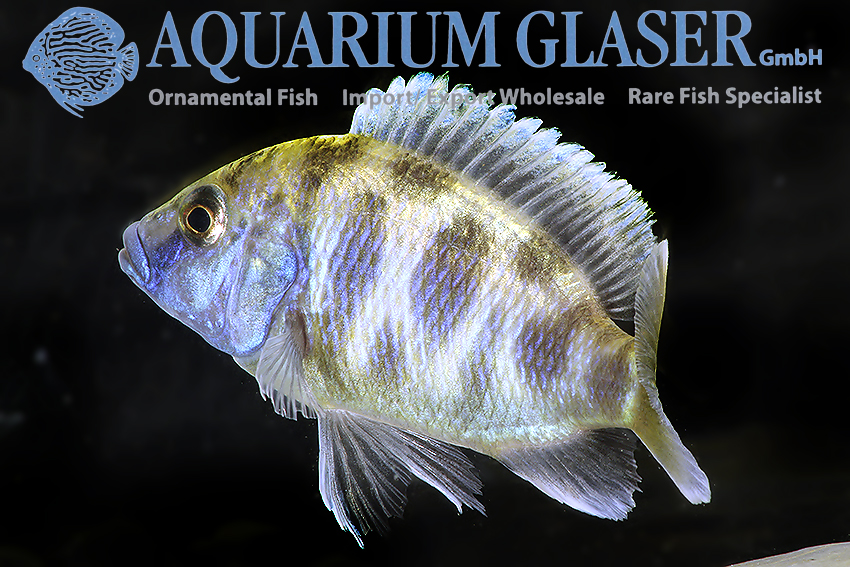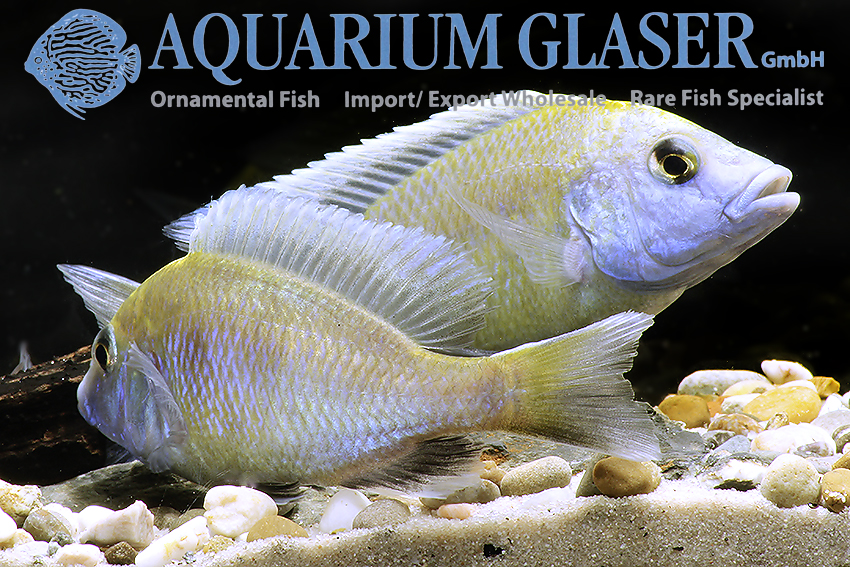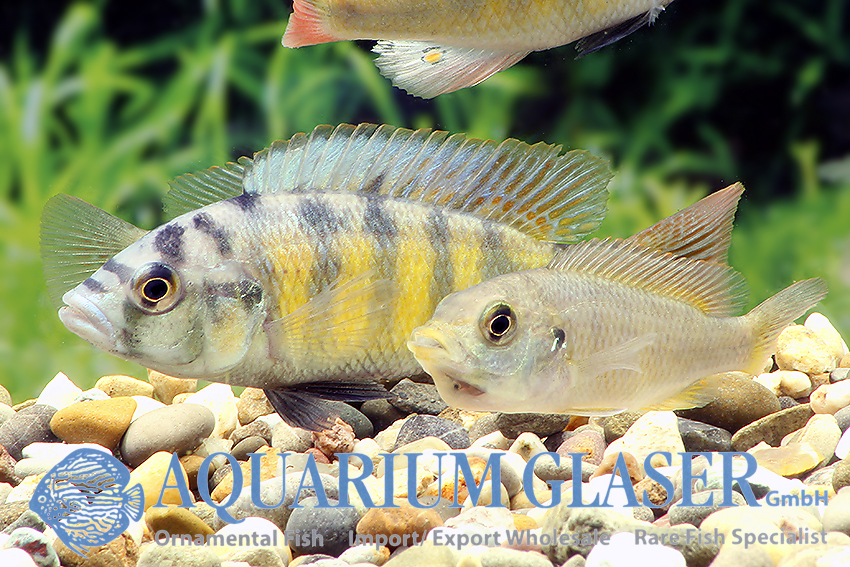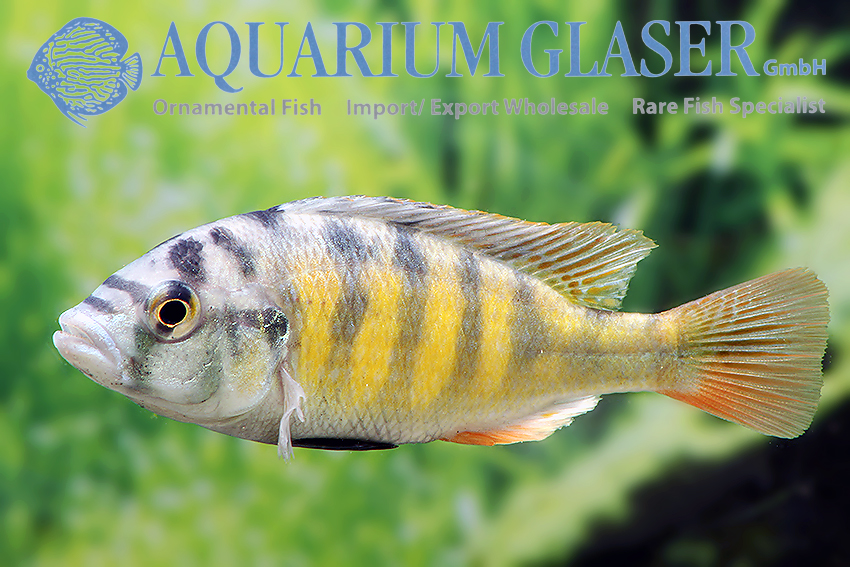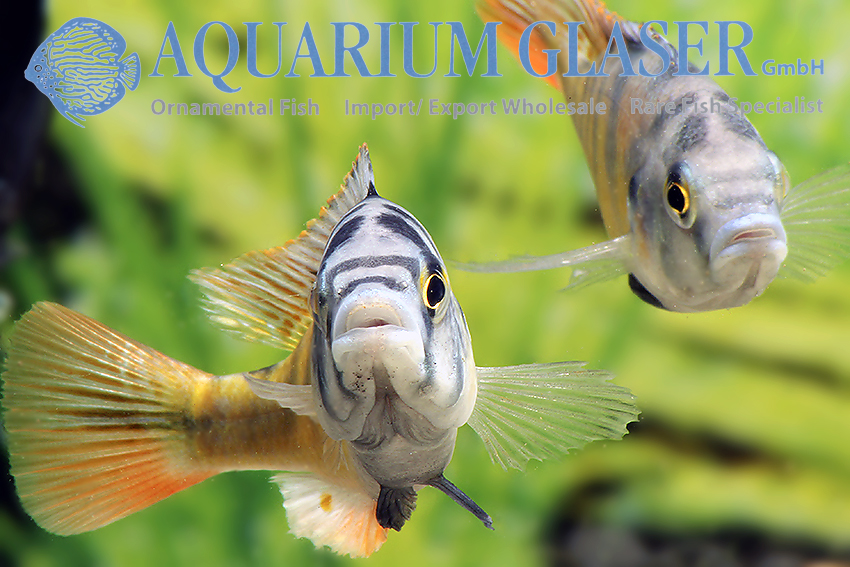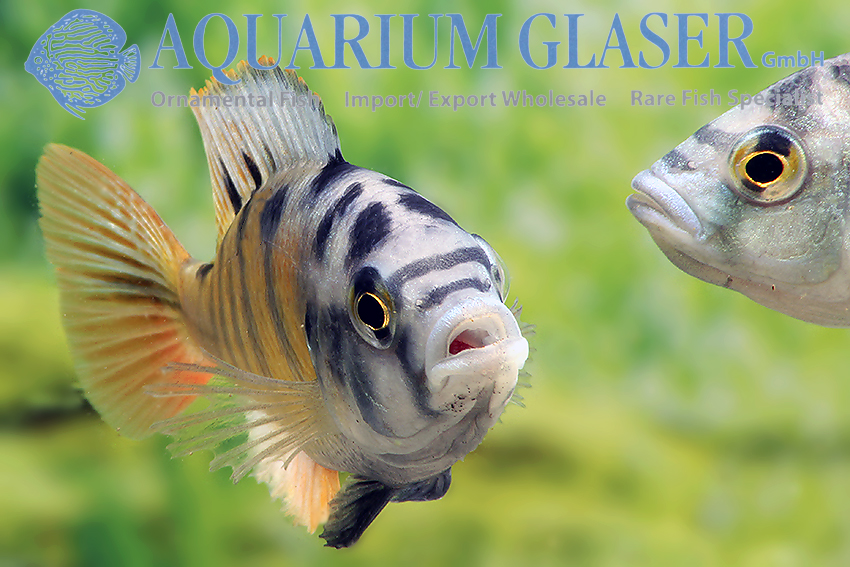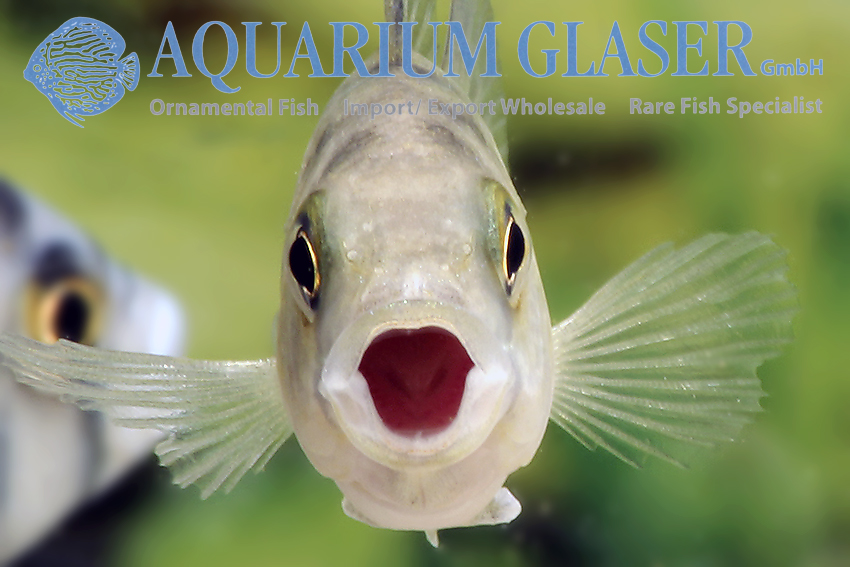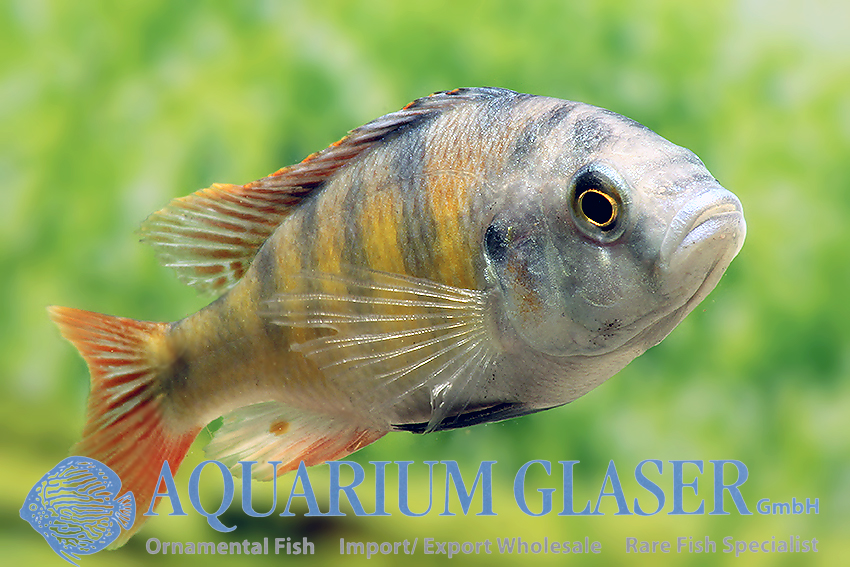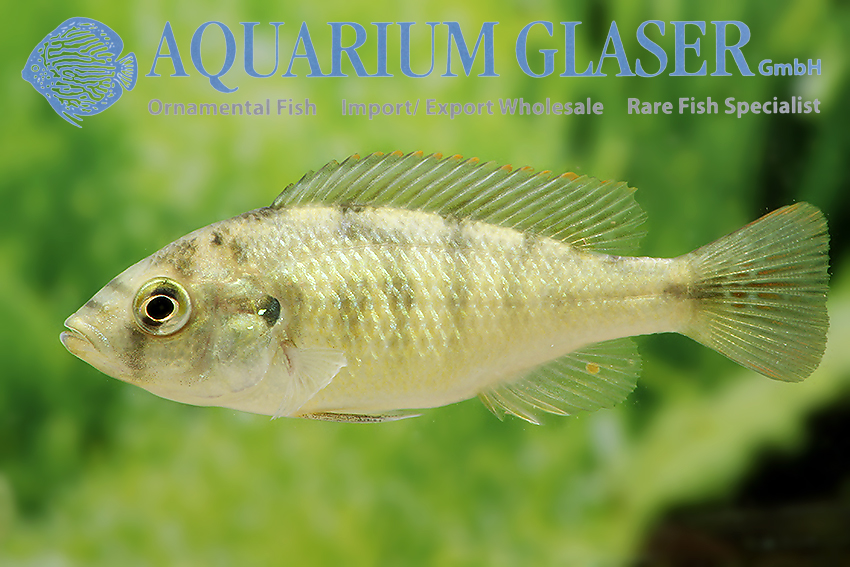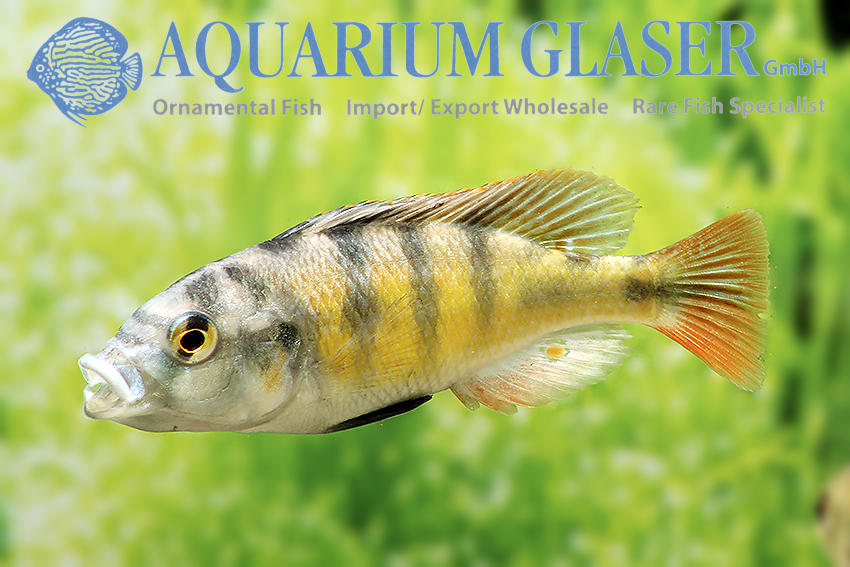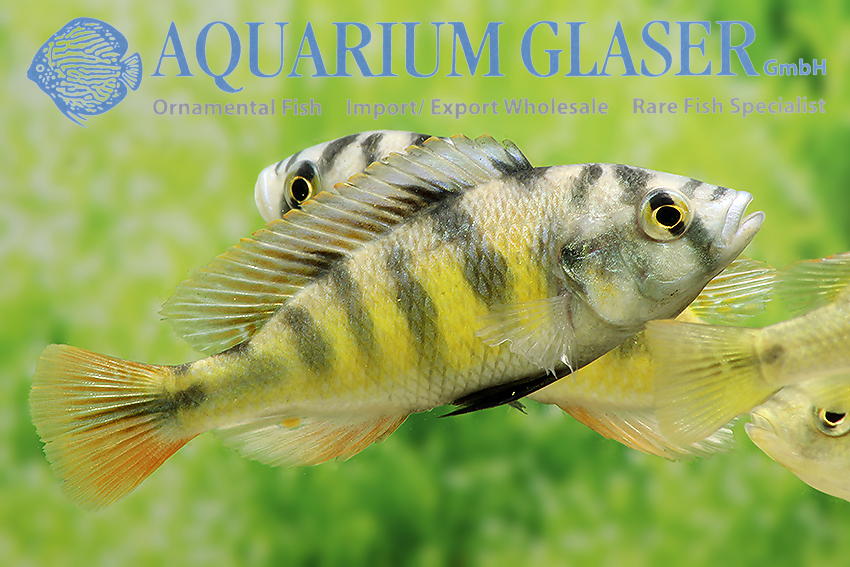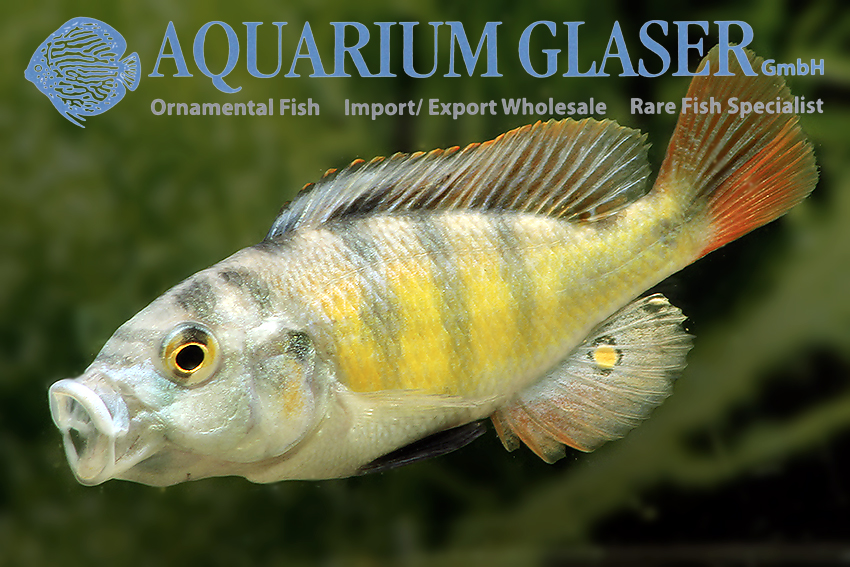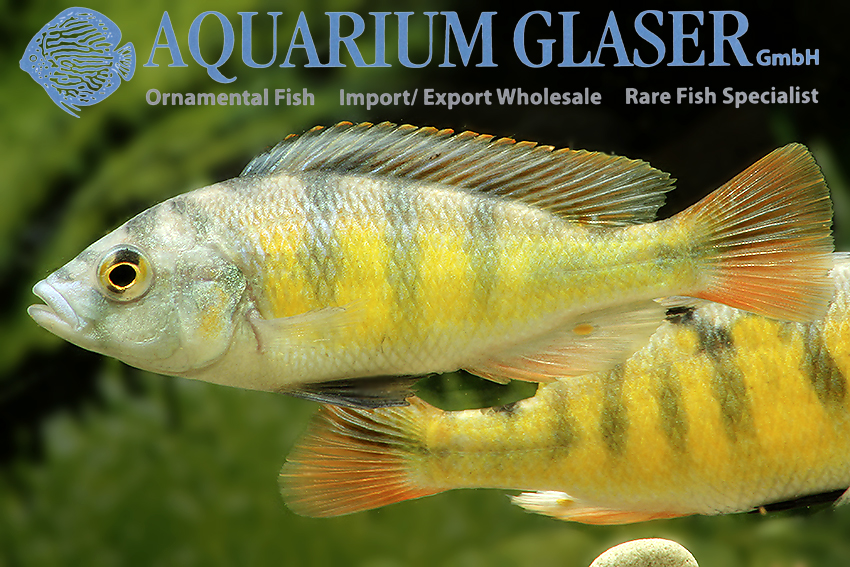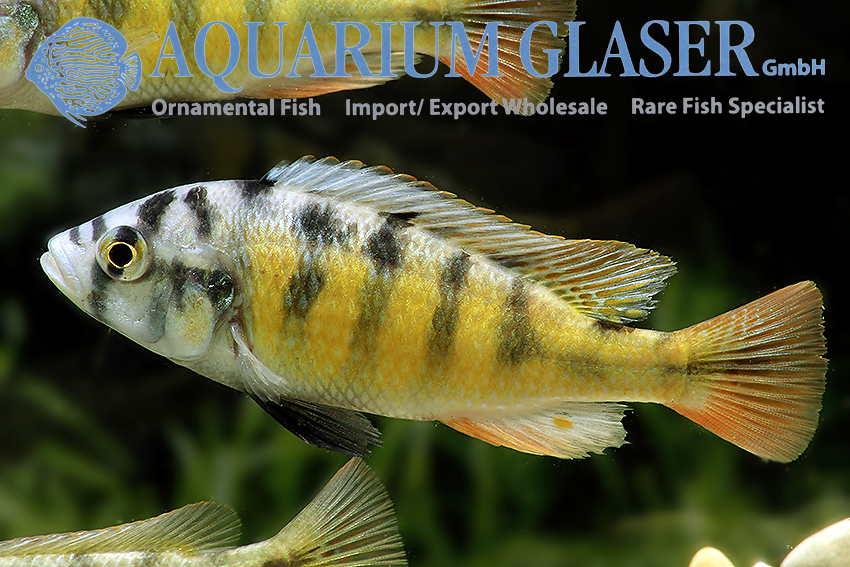The genus Nimbochromis is probably best known to aquarists through the “sleeper”, N. livingstonii. All Nimbochromis species have a camouflage pattern of irregular brown spots. N. livingstonii uses this to imitate a decaying fish, because fish carrion look very similarly spotted. So the sleeper lies on his side on the ground and plays dead fish. Unsuspecting young fish that want to eat from the carrion are thus attracted and land in the stomach of the sleeper.
The animal received the name “sleeper” from the fishermen of Lake Malawi, who were able to observe the unusual lying around of the perch, which grows to over 20 cm in length, through the often crystal clear water of the lake. The sleeper is found seawide, local forms are not known in the hobby. Among each other the animals are quite aggressive, therefore they should be kept in as large groups as possible and with (robust and sufficiently large!) accompanying fish, but not with other Nimbochromis species, as the animals can hybridize.
Very interesting is that each sleeper has an individual spot pattern, possibly this prevents the prey fish from adapting to a certain enemy image, which would reduce the hunting success. In other Lake Malawi cichlids the body pattern is usually so constant that it can be used as a species characteristic.
For our customers: the animals have code 530003 on our stocklist. Please note that we only supply the wholesale trade.
Text & photos: Frank Schäfer





